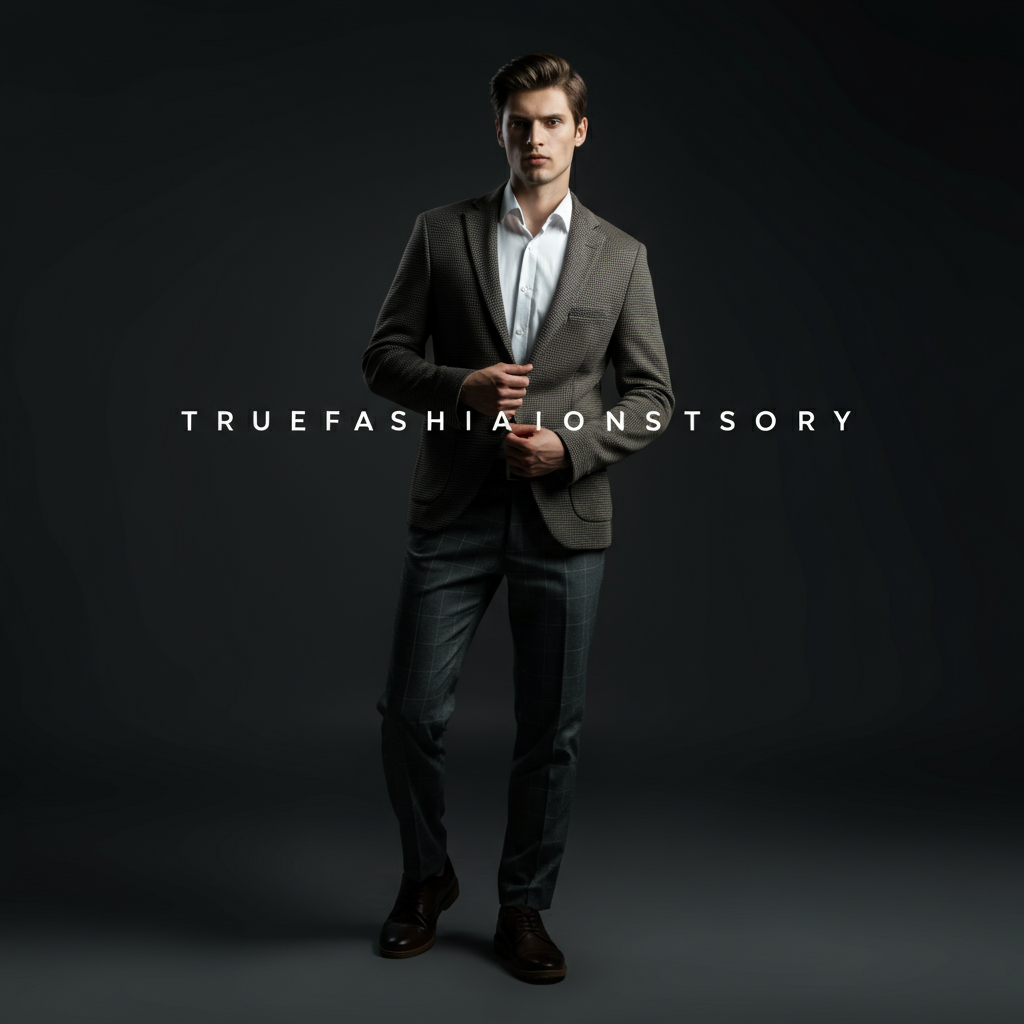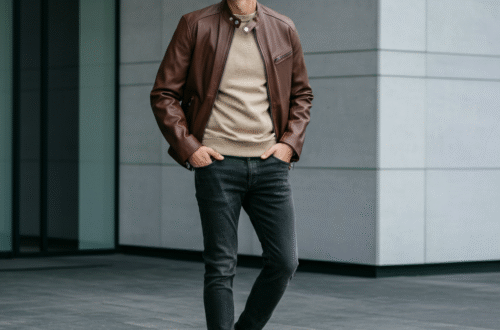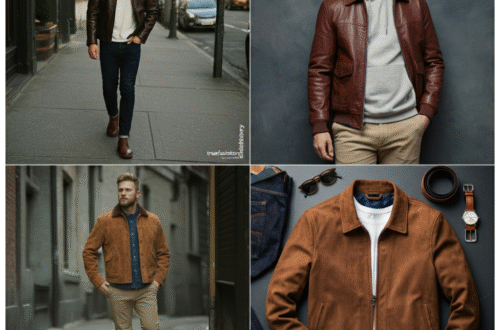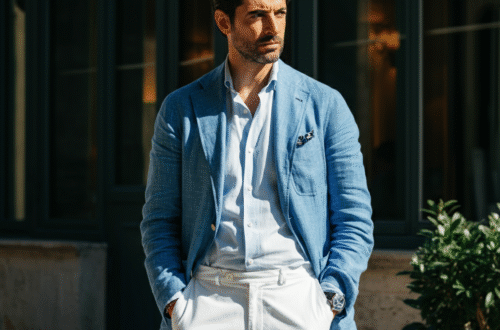What does it mean to be fashionable as a man today? For a long time, the answer was simple: a well-fitting suit, a crisp shirt, and polished shoes. While those classics will always have their place, the world of fashion masculine has expanded dramatically. It’s no longer about a strict uniform but about personal expression, authenticity, and confidence. This guide will explore the evolution of men’s style, help you discover your unique aesthetic, and provide practical tips for building a versatile and modern wardrobe. We will dive into everything from foundational pieces to the subtle art of accessorizing, empowering you to navigate the exciting landscape of contemporary menswear.
The Evolution of Men’s Fashion
Men’s fashion has come a long way from the rigid dress codes of the past. The journey from powdered wigs and elaborate tailcoats to today’s diverse styles reflects massive social and cultural shifts. Post-war eras brought practicality and utilitarianism, while the counter-culture movements of the 60s and 70s introduced bold colors, new silhouettes, and a rebellious spirit. The 90s gave us grunge and streetwear, which continue to influence designers today. In the 21st century, the lines have blurred even further. The rise of social media and a global perspective has democratized style, allowing trends to emerge from the streets just as often as from the runways. This evolution has paved the way for a more inclusive and expressive approach to fashion masculine, where individuality is the ultimate goal.
Key Takeaways
- Expression is Key: Modern masculine fashion prioritizes personal expression over rigid rules.
- Build a Foundation: Start with high-quality, versatile basics to create a functional wardrobe.
- Fit is Everything: A perfect fit can make even the most basic outfit look sharp and intentional.
- Accessorize Smartly: Accessories are powerful tools for elevating your look and adding personality.
- Embrace Evolution: Style is a journey, not a destination. Allow your aesthetic to grow and change with you.
Finding Your Personal Style Aesthetic
Defining your personal style is the first step toward building a wardrobe you love. Instead of chasing fleeting trends, focus on what makes you feel comfortable and confident. Start by looking for inspiration. Who are your style icons? They can be celebrities, athletes, or even characters from your favorite films. Notice what you like about their outfits—is it the color palette, the fit, or the overall vibe? Create a mood board on a platform like Pinterest to collect images that resonate with you. This visual guide will help you identify recurring themes and silhouettes that you’re drawn to. Think about your lifestyle as well. An office worker will have different wardrobe needs than a freelance artist. Your style should be an authentic reflection of who you are and how you live.
The Major Masculine Style Archetypes
To help you find your footing, let’s explore some common style archetypes. Remember, you don’t have to fit neatly into one box; you can mix and match elements to create a look that’s uniquely yours.
The Classic Gentleman
This style is timeless and sophisticated. It revolves around well-tailored pieces, neutral colors, and high-quality fabrics.
- Staples: Navy blazers, crisp white button-down shirts, tailored trousers, leather loafers, and a classic trench coat.
- Vibe: Polished, refined, and effortlessly elegant. Think Cary Grant or David Beckham.
The Rugged Outdoorsman
Inspired by workwear and the great outdoors, this aesthetic is all about durability and function.
- Staples: Flannel shirts, denim jackets, sturdy boots, raw denim jeans, and comfortable henleys.
- Vibe: Practical, masculine, and ready for anything. Think Chris Pratt or a modern lumberjack.
The Streetwear Enthusiast
Rooted in skate and hip-hop culture, streetwear prioritizes comfort, brand identity, and a cool, urban edge.
- Staples: Graphic tees, hoodies, sneakers, bomber jackets, and relaxed-fit pants or joggers.
- Vibe: Casual, trendy, and expressive.
The Modern Minimalist
This style is clean, simple, and intentional. It focuses on a muted color palette, high-quality basics, and uncluttered silhouettes.
- Staples: Monochromatic t-shirts, slim-fit chinos, sleek sneakers, and structured outerwear.
- Vibe: Understated, modern, and sharp.
Building a Foundational Wardrobe
Regardless of your personal style, every man needs a foundational wardrobe. These are the versatile, high-quality workhorses that you can mix and match to create countless outfits. Investing in these core pieces will save you time and money in the long run. Think of them as the building blocks of fashion masculine. The goal is to acquire items that won’t go out of style and can be dressed up or down depending on the occasion. A great place to start is with neutral colors like black, white, gray, navy, and khaki, as these shades pair well with everything. As you gain more confidence, you can begin to introduce more color and pattern into your collection.
Essential Tops
Your collection of tops should cover everything from casual weekends to business-casual meetings. Start with a set of high-quality t-shirts in white, black, and gray. Look for durable fabrics like Pima cotton that hold their shape. Add a few button-down shirts, including a classic white Oxford for versatility and perhaps a chambray or flannel shirt for more casual looks. Finally, invest in quality knitwear, such as a merino wool crewneck sweater and a versatile half-zip.
Must-Have Bottoms
For pants, versatility is king. Every man should own at least one pair of dark-wash, well-fitting denim jeans. They are the ultimate chameleon, easily dressed up with a blazer or down with a t-shirt. A pair of chinos in a neutral color like khaki or navy is another essential. They bridge the gap between jeans and formal trousers, making them perfect for smart-casual settings. Depending on your lifestyle, you might also consider a pair of tailored wool trousers for more formal events or comfortable, stylish joggers for relaxed days.
Outerwear Staples
The right jacket can pull an entire outfit together. A truly versatile outerwear collection should include a few key pieces. A denim jacket is a timeless casual staple that adds a touch of ruggedness to any look. For something a bit more polished, a bomber jacket or a Harrington jacket is a fantastic choice. Finally, a more formal overcoat, such as a single-breasted wool coat in camel or charcoal, is a wise investment for colder months and formal occasions. It adds a layer of sophistication over a suit or even a sweater and jeans.
The Importance of Fit in Masculine Fashion
You could be wearing the most expensive designer clothing in the world, but if it doesn’t fit properly, it won’t look good. Fit is the single most important element in making your clothes look sharp and intentional. Ill-fitting clothes can make you look sloppy, while a garment that fits your body perfectly projects confidence and attention to detail. Getting the fit right is a cornerstone of mastering modern fashion masculine.
How Should Your Clothes Fit?
- Shoulders: The seam of your shirt or jacket should sit right at the edge of your shoulder bone.
- Chest: You should be able to button a shirt or jacket without any pulling or creasing. There should be enough room for comfortable movement, but not so much that it looks baggy.
- Sleeves: Shirt sleeves should end at the base of your wrist. Jacket sleeves should be slightly shorter, allowing about a half-inch of shirt cuff to show.
- Pants: The waistband should sit comfortably on your waist without a belt, and you should be able to fit two fingers in the waistband. The length, or “break,” is a matter of preference, but a slight break where the pant leg rests gently on top of your shoe is a classic, safe bet.
The Power of a Good Tailor
Most off-the-rack clothing is designed for a generic body type, which means it rarely fits anyone perfectly. This is where a good tailor becomes your best friend. For a relatively small investment, a tailor can make your clothes look like they were custom-made for you. They can adjust sleeve lengths, taper pant legs, and take in the waist of a jacket. Finding a reliable tailor is a game-changer that will elevate your entire wardrobe.
Accessorizing: The Finishing Touch
Accessories are where you can truly inject personality into your outfits. They are the details that take a good outfit and make it great. The key is to be intentional and not overdo it. A few well-chosen pieces can communicate your style and add a level of polish that sets you apart. Think of accessories as the punctuation marks of your sartorial sentences. They complete the thought and add nuance. For more ideas on how different pieces come together, you can find great visual guides on blogs like truefashionstory.com.
Essential Accessories for Men
|
Accessory |
Why It’s Essential |
Styling Tip |
|---|---|---|
|
A Quality Watch |
A watch is both functional and a classic statement piece of jewelry. It signals sophistication and an appreciation for craftsmanship. |
Match your watch strap to your belt and shoes for a cohesive, polished look. A metal bracelet is more versatile. |
|
A Leather Belt |
A good belt is a necessity for holding up your pants, but it also ties an outfit together. |
Own at least two: one black and one brown leather belt to match your different shoe options. |
|
Classic Sunglasses |
Sunglasses protect your eyes and add an instant dose of cool. Find a classic shape like an Aviator or Wayfarer that complements your face shape. |
Invest in a pair with quality lenses and a sturdy frame. They will last for years and offer better protection. |
|
Versatile Sneakers |
A pair of clean, minimal leather sneakers in white or black can be worn with almost anything, from jeans to a casual suit. |
Keep them clean! Scuffed, dirty sneakers can ruin an otherwise great outfit. |
Conclusion: Crafting Your Signature Style
The world of fashion masculine is more exciting and diverse than ever before. It’s a field open to interpretation, allowing you to build a wardrobe that is a true extension of your personality. By understanding the fundamentals—finding your aesthetic, building a core wardrobe, mastering fit, and accessorizing thoughtfully—you can navigate men’s style with confidence. Don’t be afraid to experiment and evolve. Your style is a personal journey, and the most important rule is to wear what makes you feel like the best version of yourself.
Frequently Asked Questions (FAQ)
Q1: How can I find my personal style if I don’t know where to start?
A1: Start by observing. Look at men whose style you admire in magazines, on social media, or in daily life. Create a mood board with images that you like. Also, consider your lifestyle—what you do for work and fun—and choose clothes that are practical for those activities. Experiment with one new item or style at a time to see how it feels.
Q2: What is the most important rule in men’s fashion?
A2: Without a doubt, the most important rule is getting the fit right. A perfectly fitting garment, even if inexpensive, will always look better than an ill-fitting designer piece. A good tailor is one of the best investments you can make in your personal style.
Q3: How many pairs of shoes does a man really need?
A3: A solid foundation would include at least four pairs: a pair of black or brown leather dress shoes (like Oxfords), a pair of sturdy boots, a pair of clean and minimal leather sneakers, and a more casual shoe like a loafer or boat shoe. This selection covers nearly every occasion, from formal events to casual weekends.
Q4: Is it okay to mix and match different styles, like rugged and classic?
A4: Absolutely! Mixing archetypes is a great way to create a unique, personal look. For example, pairing a rugged denim jacket with classic chinos and loafers can create a stylish, balanced outfit. The key is to ensure the pieces complement each other in terms of color and fit.





